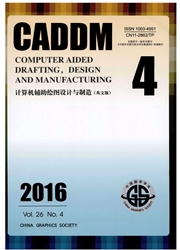

 中文摘要:
中文摘要:
In the preprocessing phase, the global terrain model is partitioned into blocks with their feature points being picked out to generate TIN model for each terrain block, then the multi-resolution models of terrain organized in the form of quad-tree is created bottom-up. Cracks between terrain blocks are avoided by inserting vertices to form common boundaries. At run-time, a view-dependent LOD algorithm is used to control the loading and unloading of the proper blocks by an additional synchronous thread. To eliminate the artifacts created by LOD transitions, geomorphing is used in real-time. These rendering strategies increase the throughput of GPU and avoid imbalance of load among CPU, GPU and Disk I/O. Experimental results show that the system can perform visually smooth rendering of large-scale terrain scenes with fine quality at an average rate of 80 fps.
 同期刊论文项目
同期刊论文项目
 同项目期刊论文
同项目期刊论文
 期刊信息
期刊信息
